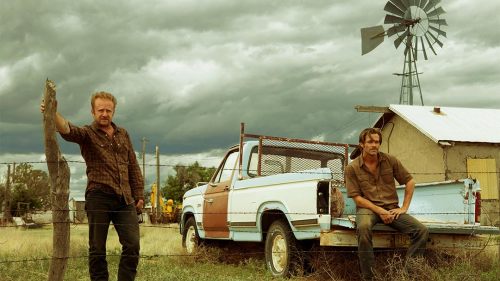The Badass Hall of Fame: Tom Slick, Millionaire Yeti Hunter
There’s an image that comes to mind when you hear about a millionaire Texan oil man, but Tom Slick, Jr. doesn’t fit any of them. A philanthropist, adventurer, peace advocate and traveler, Slick’s most fascinating contributions may be in the world of cryptozoology, thanks to his historic Nepalese missions in search of the Yeti.
Tom Slick, Sr used to be known as ‘Dry Hole Tom’ because of his shitty luck as an oil prospector, but when he made it big his nickname changed to ‘King of the Wildcatters.’ Slick Sr left a vast fortune to his family when he died young, and his son would go on to expand that fortune.
After Sr died, Tom Slick’s mother, Berenice, married Sr’s business partner, Charles Urschel (who had been married to Slick Sr’s sister, who also died young). Urschel was kidnapped at gunpoint by Machine Gun Kelly, who held him for nine days before getting a ransom of two hundred thousand dollars. Urschel’s testimony was vital to the capture of Kelly who, when he was caught, uttered a line that would give the agents of the nascent FBI their eternal nickname: “Don’t shoot, G-Man!”
Slick Jr ended up going to Yale, and it was there that his interests in cryptozoology begins. In his book Tom Slick: True Life Encounters in Cryptozoology, Loren Coleman speculates that it was reading about the 1928 Roosevelt expedition that bagged the first giant panda in the 1920s that sparked Slick’s lifelong search for undiscovered species. Whatever the cause, Slick took the opportunity of a collegiate car tour of Europe as an excuse to stop off in Loch Ness and spend some time hunting for the elusive Nessie.
After graduating from college Slick worked on expanding the family business. He and his brother established one of the first cargo air freight services, and he began buying up mineral mining operations in South America. And he poured money into scientific philanthropy, starting up the Southwest Research Institute, one of the biggest R&D focused scientific non-profits in the country. On a smaller scale he also started the Mind Science Foundation, which sounds like a joke from Bowfinger but was actually (when founded) aimed at exploring strange consciousness and mental powers. Slick became interested when, while traveling in India, he met a man who could seemingly levitate and teleport himself; ever a rational American of the scientific 20th century, Slick thought that levitation could be a huge boon to the construction business.
On top of all that, Slick was interested in world peace. As the US and USSR seemed to be on a nuclear collision course, Slick had a far-seeing vision of a unilaterally disarmed world. In 1958 he wrote a book outlining his vision, Permanent Peace, which included the slow reduction of nationalist armed forces to be replaced with a global peacekeeping force. You can imagine that this was one of his less successful ideas.
Slick’s greatest adventures would be in Nepal on the hunt for the Yeti, but his life was filled with other incredible moments. In 1956, while on a diamond hunting expedition in British Guiana (now just plain old Guyana), Slick’s plane crashed. He survived the accident and was stranded in the jungle, but he soon ended up with the primitive Waiwai tribe, living with them for two weeks before being rescued. He subsisted on parrot meat.
1956 was the same year Slick got serious about the Abominable Snowman. In his earlier trips to India he had heard stories about the ape man of the Himalaya mountains, and to Slick - a man who had once driven to Arkansas to buy a barnyard freak called a ‘hoat’ (seemingly half goat, half hog) that he had read about in the Ripley’s Believe It or Not comic and then unsuccessfully attempted to breed the monster with goats and hogs - this was too good to pass up. The New York Times in October 1956 ran an article about Slick in Nepal, armed with bloodhounds and a helicopter, but the local government put a stop to his expedition, demanding he be sponsored by ‘an organization of repute or the United States government.’
This wasn’t the only bureaucratic hassle Slick would hit in Nepal. In 1957 the government, worried about his expeditions bagging a Yeti, forbade foreigners from killing a Yeti. In 1959 a State Department memo made this the official position of the United States as well. You may have seen this memo popping up on websites over the weekend, but only Badass Digest presents the whole story behind it!
The story of the Yeti had first reached Westerners in the late 1890s, when explorers - who used to have to pose as religious pilgrims - began getting deep into Nepal. Yeti is the local name for the beast, and it basically means ‘bear of the rocky place.’ It’s also known locally as Meh-teh, which translates to ‘man bear.’
But the creature didn’t really hit the popular imagination until 1921, when the term Abominable Snowman entered the lexicon. The Everest Reconnaissance Expedition, led by Lieutenant-Colonel Charles Howard-Bury, found strange tracks in the snow. Howard-Bury thought they were wolf tracks that resembled humanoid footprints due to the beast’s gait, but his guides insisted that they were prints from ‘The Wild Man of the Snows.’ When the expedition returned, a journalist for the Calcutta Statesman interviewed the porters, who talked about ‘mehtoh,’ ie, the ‘man bear.’ He mistranslated mehtoh to mean ‘filthy,’ and coined the term ‘Abominable Snowman.’ Some later reports and legends have the Yeti being particularly stinky, but I suspect that’s the name coloring the sighting.
Anyway, the Yeti got especially popular in the 50s when Eric Shipton, attempting Everest, took the first pictures of Yeti tracks. Sir Edmund Hilary, in his successful 1953 attempt on the peak with Tenzing Norgay, came across strange tracks. Tracks - and even the creature itself - were regularly sighted as more and more Westerners took their shot at the tallest mountain in the world.
Slick got around Nepal’s new rules by getting a letter of assignment from the San Antonio Zoological Society. He headed up into the mountains, looking for any sign of the mythical beast. The trip bore some fruit, but most of it was conceptual; after spending lots of time talking with natives and showing them pictures of many sorts of animals (including artist renderings of Australopithecus), Slick came to the conclusion that there were two kinds of Yeti. One was about eight feet tall and black while the other was smaller, and reddish. He also photographed and made casts of some prints in the ground, as well as collected droppings and hair.
But this was to be Slick’s last trip to Nepal; while taking a bus up a steep mountainside the vehicle lost its brakes and began careening downhill. Everybody bailed and Slick landed hard on his knees. The injury, and the concerns of his mother (who was probably still wound up from him crashing in the jungle just a year earlier), kept him home from then on, and he only funded future expeditions.
The next expedition, in 1958, turned up some interesting artifacts in Tibetan lamaseries. The group photographed supposed Yeti scalps that were kept as relics, as well as a supposed Yeti hand. The Yeti hand was debunked by Slick himself, but the group came across another, more intriguing artifact: a mummified Yeti hand, something much harder to fake.
And so Tom Slick turned to Hollywood for help. The last expedition had been cofunded by another wealthy Texan, Kirk Johnson. Johnson, in turn, was good friends and a big game hunting partner with Jimmy Stewart - yes, the actor Jimmy Stewart - and Slick asked Stewart to help him get a hold of evidence from the mummified Yeti hand, which was at a monastery in Pangboche. One of Slick’s men stole the thumb bone and phalanx from the Pangboche hand, replaced them with human bones, and then handed the supposed Yeti parts to Jimmy Stewart, who smuggled them out of the country in his luggage.
Analysis of the bones have been inconclusive, with some thinking that the hand belongs to a Neanderthal. Later examinations of the Pangboche hand in person have ‘debunked’ it, but the debunking is based on the fact that the examiners were looking at a mutilated relic with hoax parts. No one knew about the smuggling of the bones until the 1980s, when Loren Coleman wrote the first biography of Tom Slick. The TV show Unsolved Mysteries did an analysis on some of the tissue on the hand and came up inconclusive, but the publicity from the program led to someone stealing the hand (completely this time) from the lamasery. A few years back WETA Workshop created a new hand based on existing photos and donated it to the lamasery, who had been seeing a serious decline in tourist revenue.
Unable to return to Nepal, Slick turned his attention to the American Yeti, the Sasquatch. He could head field expeditions himself in the Pacific Northwest, and he did, discovering many tracks and making many casts. Unfortunately most of his notes from this period have gone missing, possibly destroyed after his death by his family.
He also funded expeditions to search for the Orang Pendek, a small hairy cryptid sighted in Sumatra. Recent archeological discoveries in the area have shed interesting light on the Orang Pendek: a previously unknown species of humans called Homo floresiensis, nicknamed ‘hobbits,’ were living in the Indonesian archipelago as recently as 12,000 years ago. These small bipeds probably looked an awful lot like the Orang Pendek, who has been seen for hundreds of years.
When Slick first went to Nepal his intent was to kill a Yeti, much as the Roosevelts had killed the giant panda. But over time Slick began to realize that the animal deserved to live just as much as any human, and by the time he was searching for Bigfoot he was more interested in getting a photograph or capturing one than killing Sasquatch. And he changed the way the hunt for Yeti and Bigfoot happened when he began treating the beasts like real, intelligent animals who didn’t want to be seen or shot. Previous Yeti hunts had mostly been incidental to mountain climbing expeditions, and included 30 or more men, a huge group that would scare off most wildlife. Slick preferred to search in smaller, less obtrusive groups.
Tom Slick died in 1962 when his Beechcraft plane crashed in Montana. He was on his way to hunt in Canada, and possibly to do some Sasquatch searching as well. He was only 46 years old, and when Slick died so did his cryptozoological efforts. Even the Mind Science Foundation got a little less paranormal and a little more conventional in its consciousness research.
Tom Slick was the kind of eccentric millionaire we don’t see much anymore. He lived the life of a seeker and an adventurer; at one point Nicolas Cage was going to star in a fictionalized movie based on his life called Tom Slick: Monster Hunter. That film stalled out, but maybe somebody in Hollywood will take a look at the life of this remarkable man and see that he was the Indiana Jones of cryptozoologically minded oil millionaires.



